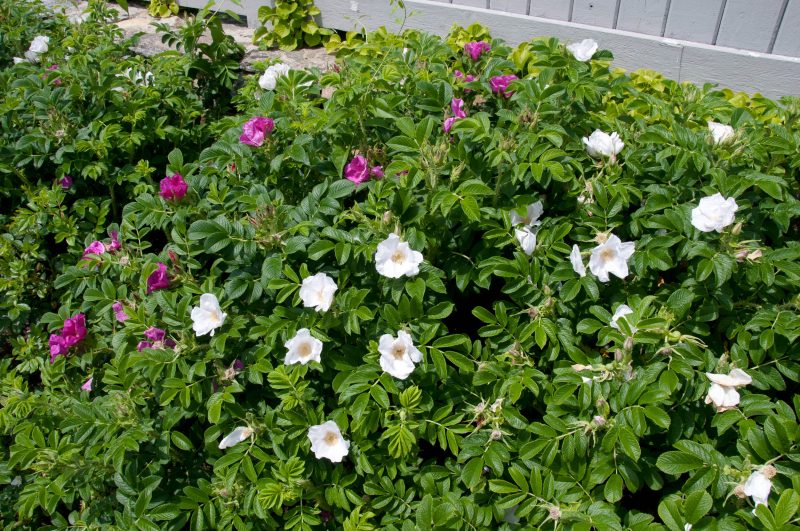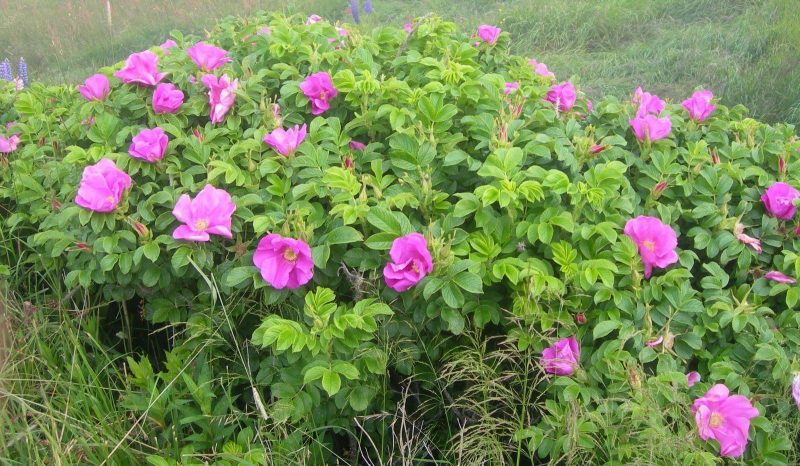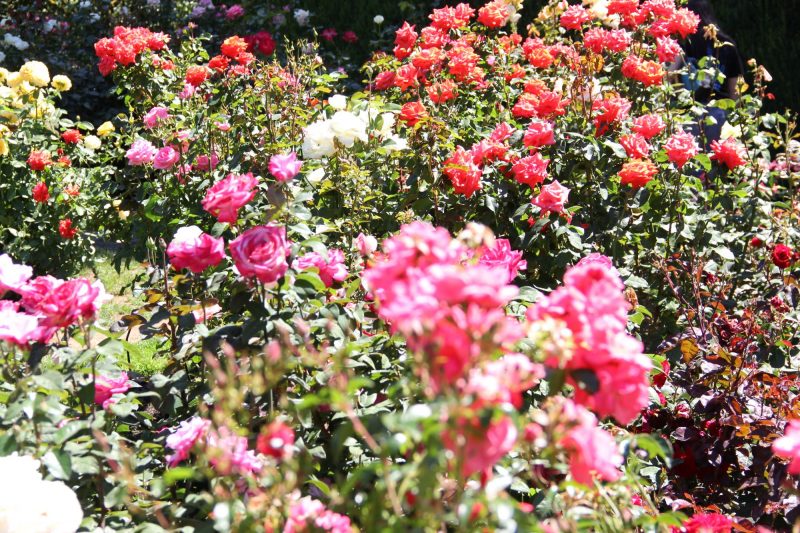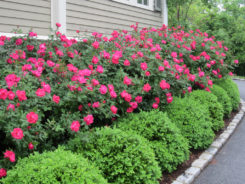A wrinkled rose is an extremely unpretentious, abundantly flowering bush. This type of roses is referred to as dogrose, and even the most inexperienced gardener will cope with their cultivation.
Material Content:
Description of varieties and nuances of growing
Today, the most common hybrids and varieties of the condemned culture, the name of which is the name Grothendorst. This grower has made the greatest contribution to plant breeding.

- One of the most beautiful is the variety “F. J. Grothendorst, which was bred by crossing a polyanthus rose and the Rubra cultivar. In height, the bush can reach one and a half - two meters, is highly frost resistant.
- "Pink Grotendorst" blooms in a delicate pink color, a pyramidal shape. The variety looks original against the background of light green foliage of shrubs.
- Variety "Queen of the North" is not afraid of sudden cold snap and blooms with scarlet terry, rather large flowers.
These are just a few varieties of wrinkled roses that grow well in the middle lane. Rosa Rugosa has very interesting hybrids - Agness, Abelzieds and many others. The wrinkled rose Alba is also grown everywhere.
Choosing Healthy Seedlings When Purchasing
The key to a healthy, strong and abundantly flowering bush is a competent choice of seedling when buying.

It can be grafted or have its own root (grown from cuttings).
- When buying, one should give preference to annual seedlings.
- Do not be afraid to buy plants with open roots - if the rose was recently dug up, it will quickly take root in a new place.
- The shoots of seedlings must be smooth, without damage, in no case wrinkled.
- Do not buy seedlings from which buds have already blossomed, which often happens in spring.The kidneys should be at rest.
Seedlings that are sold in colorful packaging stores are likely to remain after the autumn sale in Europe. Such plants can be weakened by long winter storage, and their roots are too dry.
Planting wrinkled roses in open ground
It is advisable to plant rosehips wrinkled in the ground in the spring in order for the plant to gain strength before the onset of cold weather. For this type of roses, a sunny place on the plain, on the south side, is chosen.

The bush will grow better on loamy soil saturated with humus.
If the soil on the site is poor, then organic matter must be added to the planting pit. If possible, before planting, the roots of the plant are lowered into a clay mash, and poured into a hole to a bucket of humus.
In warm regions where autumn is long and warm, a rose can be planted in the fall. Bushes are planted 1.5 meters from neighboring plants. If it is planned to grow a hedge from a wrinkled rose, then 1 meter is left between the plants.
After digging a hole a little more than the size of the roots, pouring humus on its bottom, the seedling is lowered and covered with earth. You can not fill the soil with a growth point. The rose should be planted to the same depth at which it grew before the sale.
Planted bushes spill abundantly, sprinkle with dry earth and ram it around the roots.
How to care for flowers
These flowers practically do not require painstaking care and can come to terms even with drought. The main thing for wrinkled rose hips is good lighting.

- Lighting. The bush will not be able to bloom in the shade or on the north side of the site.
- Wind. It is advisable to protect shrubs from drafts.
- Frost resistance. Rosa rugosa, or dogrose, can even withstand severe frosts and winter without shelter.
- Watering. It is advisable to water the entire period of rose growth, although they are classified as drought tolerant plants. Watering rate - a bucket under each bush. Watering should be done at least once every two weeks.
To achieve lush flowering roses need to be fed.
- Shrubs gratefully accept organic fertilizing, as well as mineral mixtures. But in the first couple of years, the dogrose can not be fertilized.
- In the third year, urea is already being introduced.
- Then, organic matter is added every four years - humus or peat.
- He loves rose and mineral mixtures, which should be applied in the fall, and in very small quantities.
To make the bushes look decorative, they are trimmed.
Although this activity is quite painstaking and time-consuming, trimming is a must.
Carry out the procedure in the fall.
- Rose hips do not cut the first years of life, and only from the third year they begin to cut shoots that lie on the ground.
- In the spring, pruning is carried out for sanitary purposes. During sanitary pruning, all too weak and dried shoots are removed, and too long branches are shortened to give the bush a decorative look.
- In autumn, weakened shoots and too thin ones that are unlikely to overwinter are also removed.
- Throughout the season, weak branches are cut and faded inflorescences are removed.
Wrinkled dogrose is practically not susceptible to diseases and pests. Despite the lush, colorful flowering, the bush is slightly sick. But if you do not follow the basic rules of care, the plant can greatly weaken.
If the culture is weakened by prolonged drought or, on the contrary, it fills a lot, dew and rust can develop. Against diseases, rose hips are treated with chemical preparations just like other types of roses.
From insects on the culture, aphids and spider mites can settle. To destroy parasitic insects, the bushes are sprayed with insecticides.
Use in landscape design
Wrinkled rosehips are widely used in the design of plots, in the creation of compositions in parks and squares. For example, the Shrub "Alba" can reach more than two meters in height, which allows you to grow it as a living, almost impassable hedge.
Wrinkled rose hips are the perfect base for fencing and decorating fences.
These roses look great and singly against a background of emerald green lawns and conifers.
Crowns of rose hips perfectly tolerate pruning, which makes it possible for the grower to form a bush of any size and give it the desired shape. The colorful flowering of a wrinkled rose will certainly make it the main decoration of the design of the infield.















